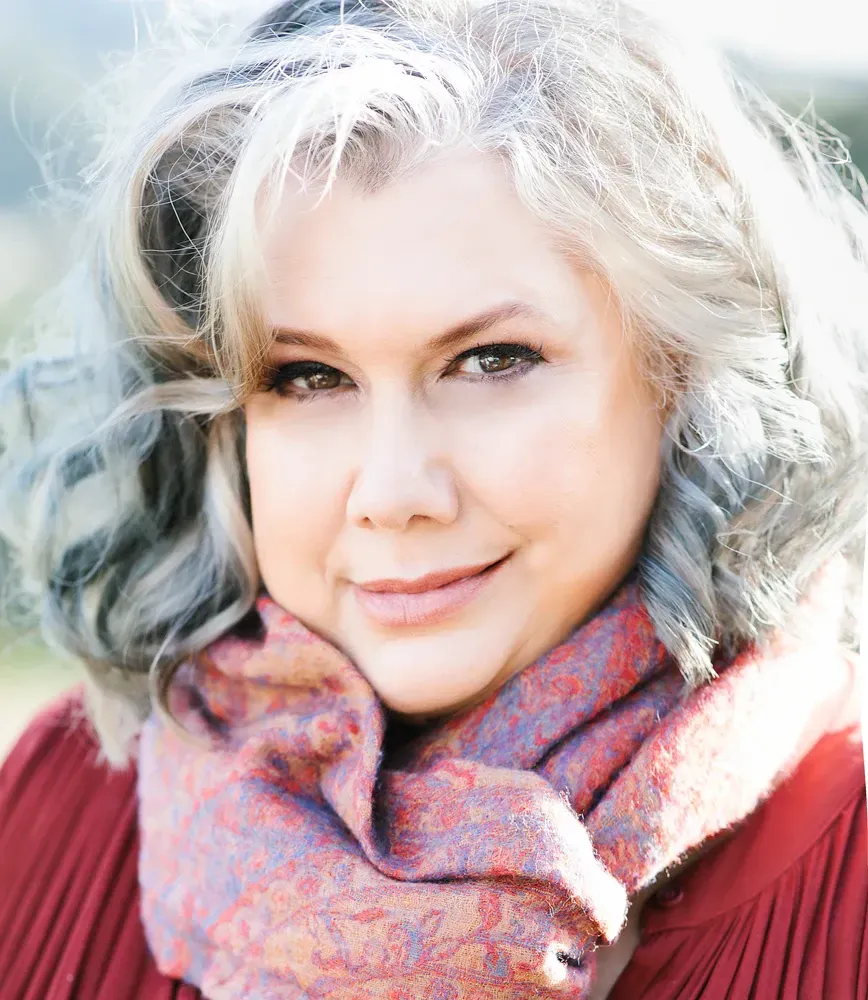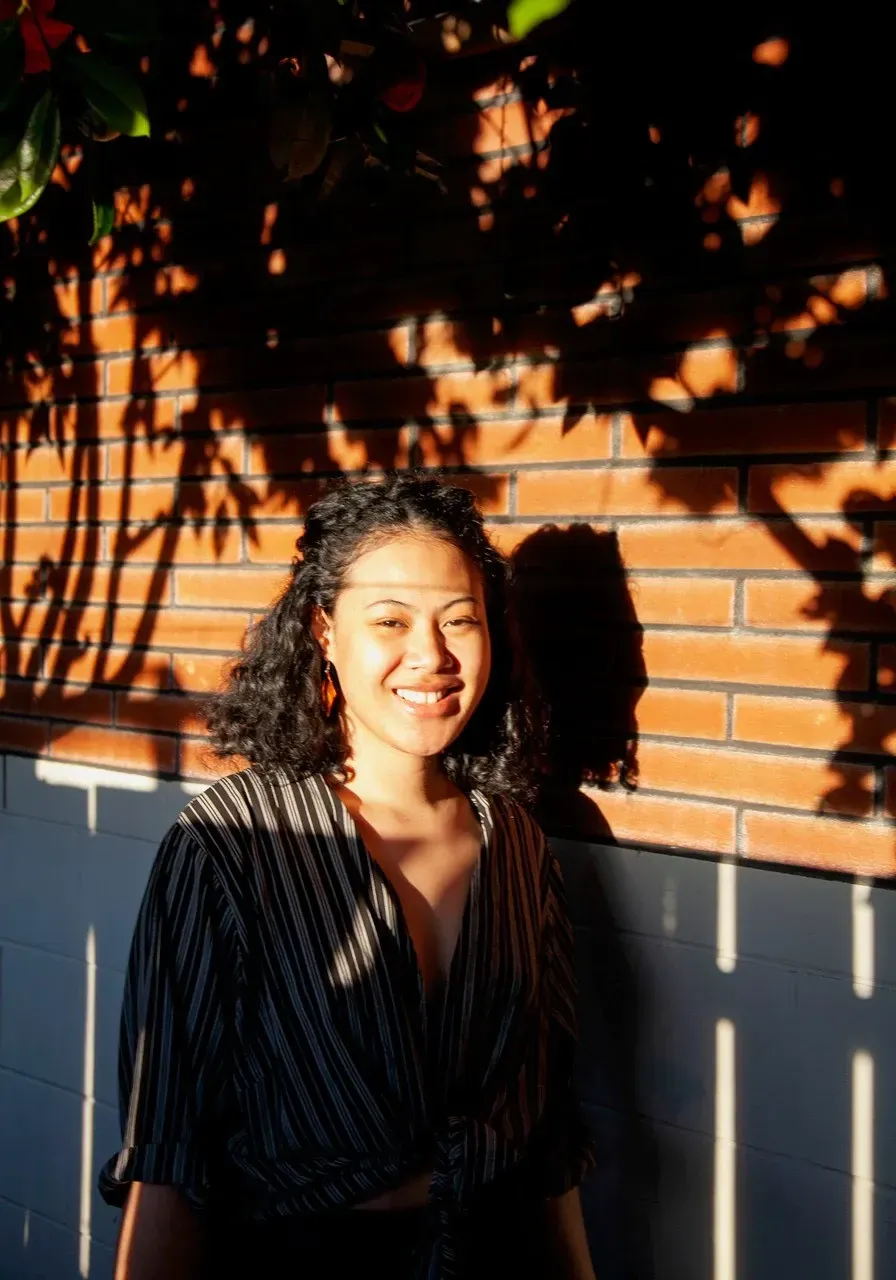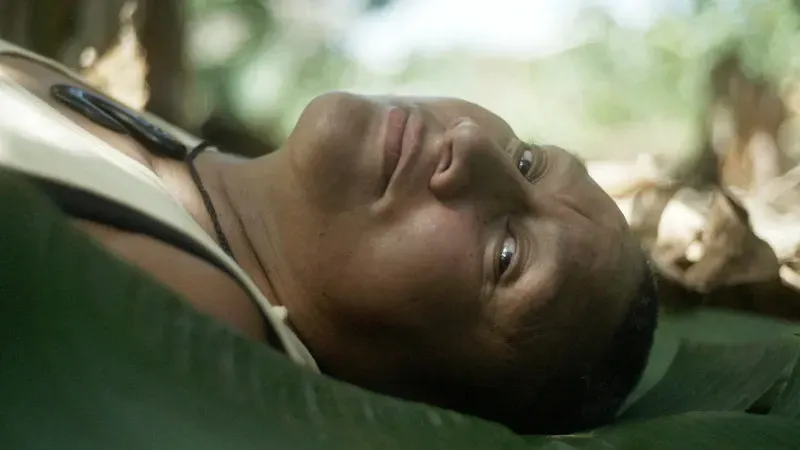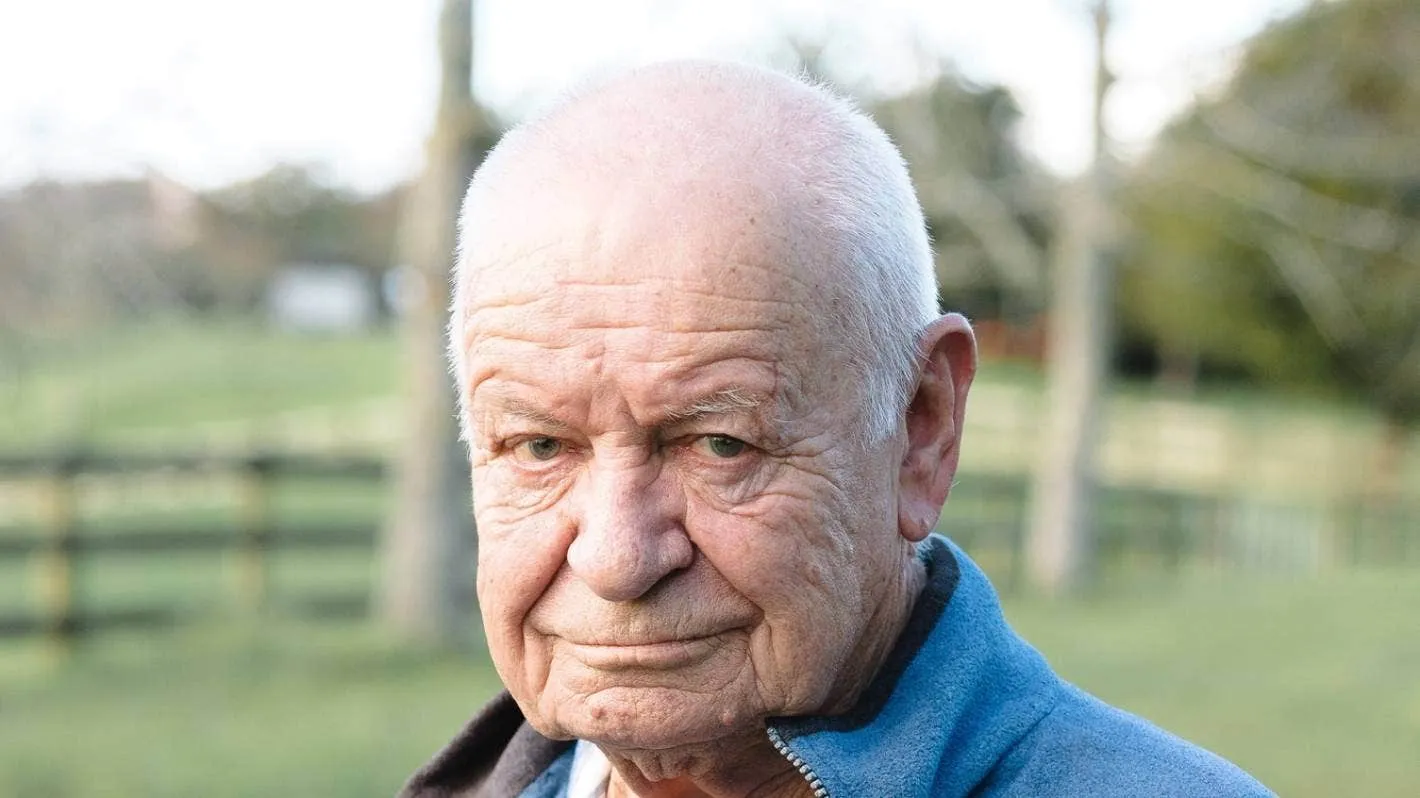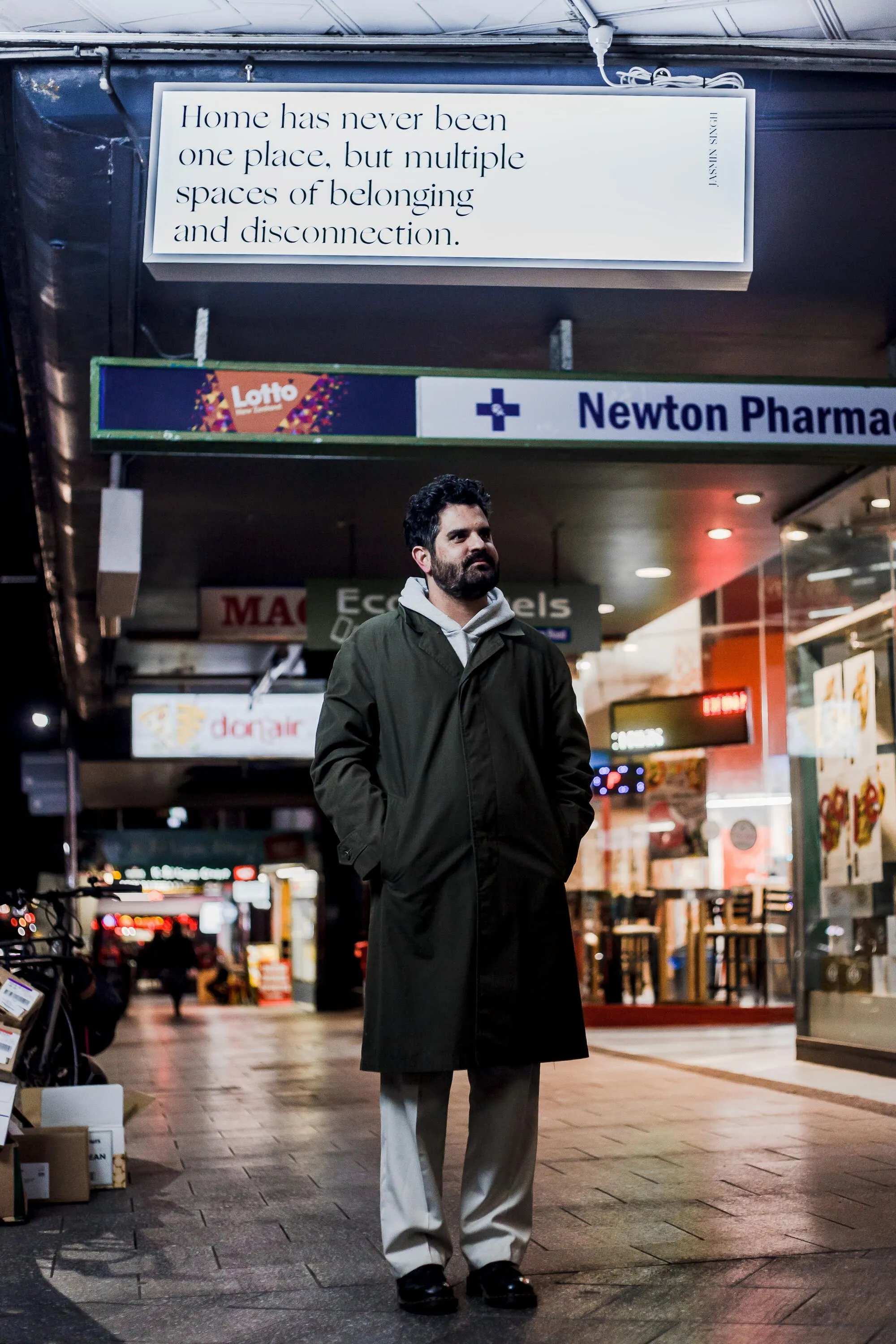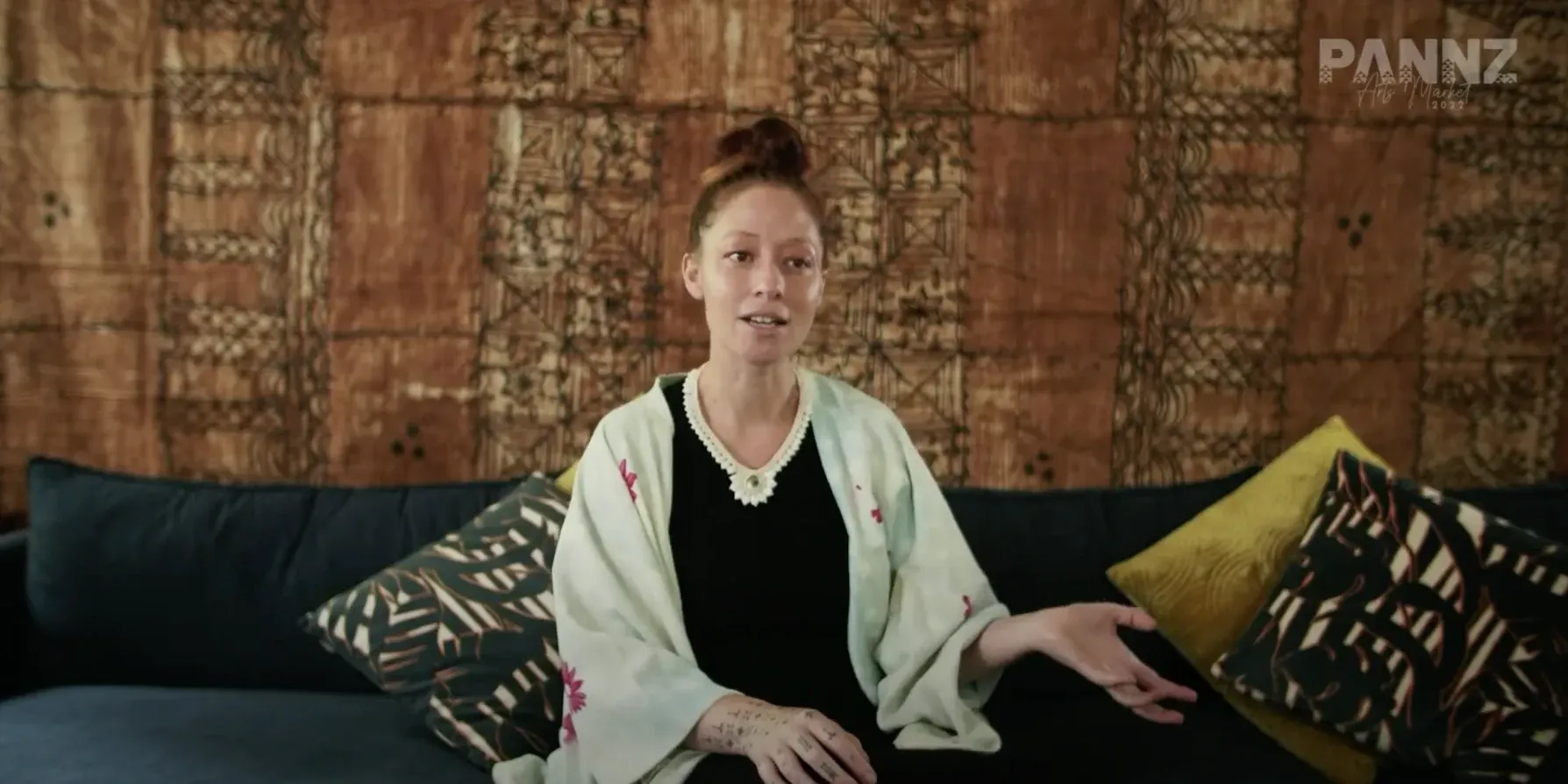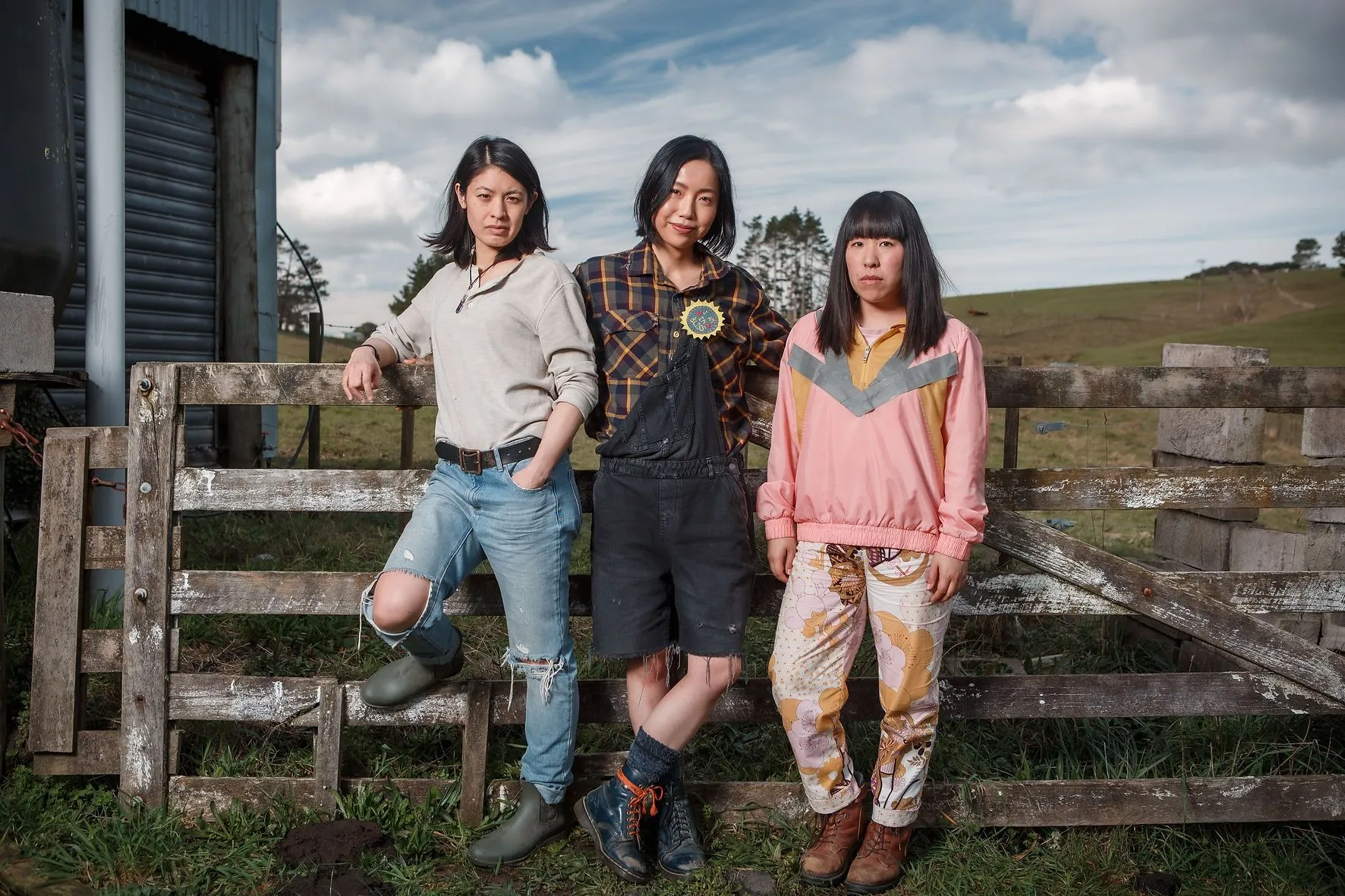New Directions, New Grants, New Funds for Aotearoa Creatives
Written by
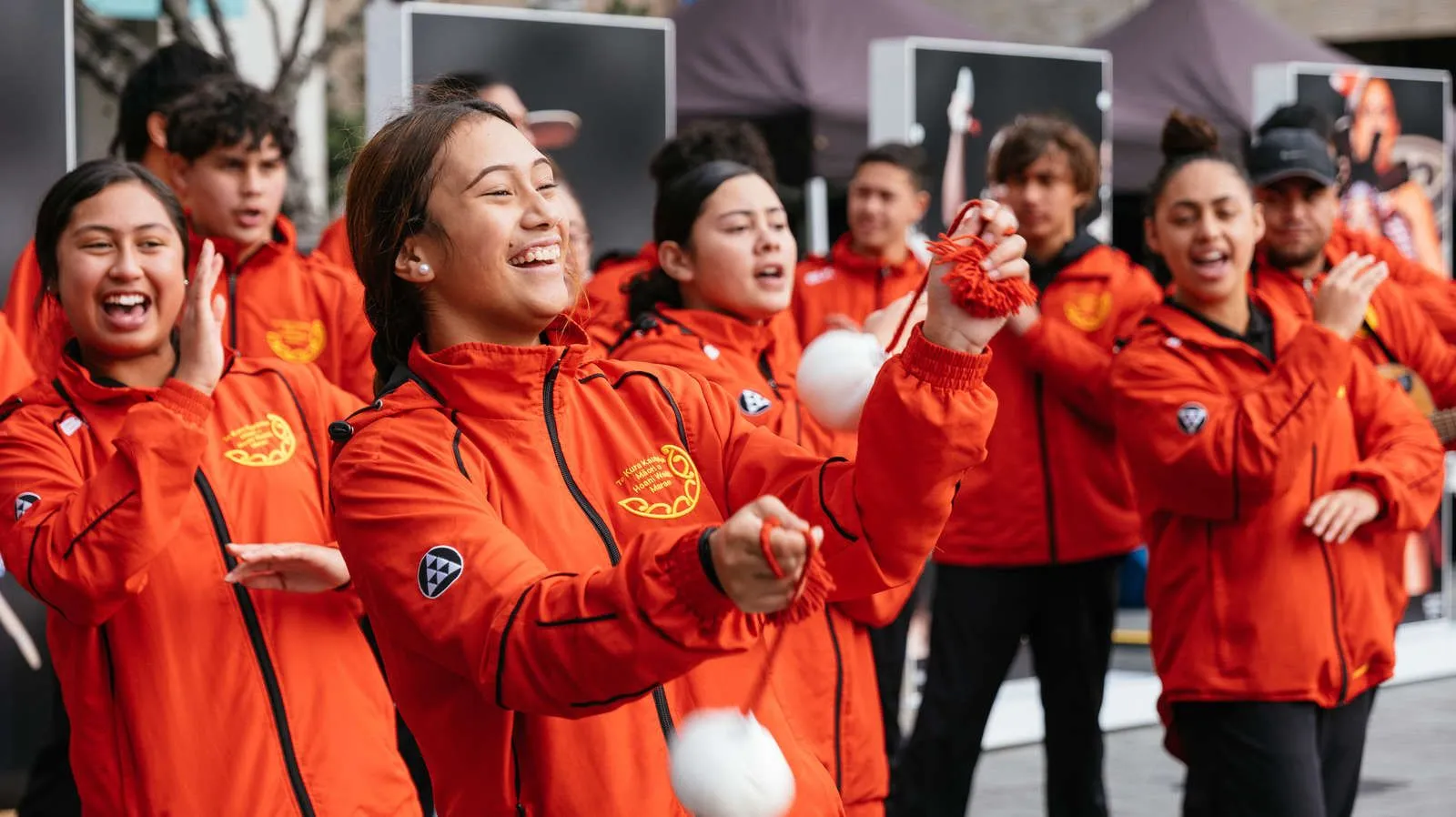
The creative community has been screaming out for support.
And no matter where you sit on this issue, it has to be said - the people who these pleas have been directed at are starting to listen.
Creative New Zealand - by their pandemic standards - have been quiet to start 2022 but that’s just changed this morning (Thursday), putting the call out for feedback and thoughts on where their focus should be on the next four years.
This reads like a refining - rather than a redelivering - of the organisation’s Statement of Intent 2019–2029 because, to be blunt, any strategy of long-term plan that was created pre-COVID has to be pretty drastically overhauled. Especially in a sector like the arts.
CNZ’s proposed areas of focus are
-
Resilience, including sector sustainability and sustainable careers
-
Access, inclusion and equity, relating both to the services CNZ offers and the sector more broadly
-
Wellbeing, embedding a recognition of the role of the arts and ngā toi in supporting the wellbeing of all New Zealanders
Creatives are being asked to fill out a survey or email their thoughts in strategy@creativenz.govt.nz by the end of the month.
Among a swag of announcements, CNZ has released their first Remuneration Policy for Artists and Arts Practitioners, which has been on the horizon for some time.
Chief Executive Stephen Wainwright says, “We intend that this Remuneration Policy for Artists and Arts Practitioners will be a catalyst for change – so that we can look forward to a future in which our artists are recognised and celebrated for the contribution they make to the wellbeing of all New Zealanders and that the arts can be a viable career option.”
The policy sets out principles and practice guidelines that can be used by artists and practitioners, arts organisations and those engaging artists - it lays out the need to put to bed old tropes like “it’s good exposure” in leiu of payment.
The words that most creatives will want to hear out of the policy: all creative work is, by default, paid work and Remuneration practices must recognise artists’ and arts practitioners’ rights and interest in the work they create - copyright and royalties
CNZ says the intent of the policy is to make arts sector careers more sustainable by:
-
modelling good practice for the engagement of artists and arts practitioners
-
setting expectations of individuals, groups, collectives and organisations that CNZ funds
-
supporting advocacy for fair payment for all aspects of employment in the sector by central and local government and the private sector
-
supporting collaboration with other agencies on initiatives that contribute to the building of sustainable careers.
This has just been introduced in the past few hours, and will definitely need further unpacking.
They’re also looking at what can be done for artists and arts organisations in a digital space.
CNZ is seeking expressions of interest from those who could provide services - potentially like commissioning digital content/art across multiple platforms - which could lead to establishing a digital arts entity.
They’ve described the aim as “to connect the arts and cultural sector with emerging digital technology in order to transform the sectors’ capability to create, to distribute and to reach new audiences for which live performances are inaccessible.”
Like a high resolution image being opened on weak wifi, the details around this are being revealed slowly. Registration of interest will be open for a month from 14 March, with more information due then.
Building blocks
This is on top of what was a pretty significant announcement on Tuesday. The new Building Business Capability for Individual Practitioners Fund 2022 shows they’ve heed the call of the creative community for more non-artistic tools to be added to the industry’s kete.
CNZ states the purpose of the fund is to offer individual artists and arts practitioners grants of between $5,000 and $10,000 to develop business skills that will have a lasting impact on their creative career.
Cath Cardiff, CNZ’s Senior Manager Arts Development Services told The Lowdown “capability building projects are eligible through our Arts Grants programme but it’s not often that we receive those types of proposals, so it’s great to now be offering dedicated capability support to independent artists and practitioners as a targeted fund.
“This type and level of support has often been requested but we have not previously had the resources to provide it.”
Sam Snedden - along with Alice Canton and Johanna Cosgrove - was one of the drivers behind last year’s independent artists survey that squarely called for financial literacy to be prioritised by the sector’s main funders.
He told The Lowdown “I'm really pleased to see the creation of the new fund for independents to assist them with their professional skills, but with a limit of 100 applications I expect the impact to be limited.
“It's a great start, but I wonder if CNZ could have a much wider impact by hosting seminars and teaching clinics that could pull in a lot more people and make the money for the fund stretch further. Once again, the onus is going to be on individual practitioners to take the time to explain what they don't know - a tall order! - and then submit an application which may or may not be successful.
“We need an increased focus on community and less on individualism if we want this fund to have a real impact.”
The Lowdown put this to CNZ, Cardiff responded.
“We want to ensure this support will have a long-term impact on individuals and their career sustainability. We have a limited budget which we are applying to this pilot fund, to see whether we can achieve outcomes that are mutually agreeable to both us and to independent artists.
“We’re offering individual grants to give artists and practitioners flexibility to design their own skill-building specific to their practice, career stage and needs. This sector-led approach is important (rather than CNZ determining what the offering is).
“We’re open to a wide range of options - some people may need mentoring to build business skills, others may want to attend a digital training course. The fund offers support for implementation costs, such as digital tools, as well as skill-building. That way, the new skills can be applied and embedded to get that longer-term benefit. The fund is also designed to build on our investment in regional arts development agencies and other arts providers who already offer training and workshops for individual practitioners.”
One of Snedden’s fellow survey creators, Alice Canton has earned a reputation as an staunch but considered advocate for underserved and underrepresented areas of the creative community. She adds it’s “fabulous to see MCH and CNZ listening to the sector, and developing mechanisms that address both the acute and long-term needs of independent practitioners.
“I love the capability development fund, but wish the application wasn't a first-in-first-served submission process. Permitting this kind of action validates so many things that directly negates the accessibility work folk are doing in the sector to level the playing field.
“Why can't the principle of 'Equity By Design' pervade all aspects of public funding opportunities? There's gotta be another way to manage demand that doesn't just privilege people who already have resources ready to go.”
Snedden agrees “here's a thought: Imagine if you paid a course convenor $10,000 to put together a programme and then PAID 100 artists to attend a series of workshops (lets say $100 per workshop for four workshops). You could get real skills into the hands of 100 artists for $50,000, AND they would be making money.
“We also need a total overhaul of the way that we engage with and teach artistic practice. Too many people are spending too much money on training that does not prepare them for the realities of working as an independent contractor. Any training institution that doesn't do this in a meaningful way (not two classes on tax as a box ticking exercise) is ripping people off.”
It should be pointed out - there has already been some movement in this area. Realising that creatives needed business skills in addition to their arts practice, Carmel Sepuloni - Minister of both Arts Culture and Hertiage and Social Development - put in place the Creative Careers Service. The five pilot providers Nelson Chamber of Commerce, Depot Artspace, Creative Waikato, Ngahere Community and The Big Idea - have deep roots into the community and have developed curriculums to impact on those navigating creative careers to support their sustainability, viability and resilience.
All these steps are in the right direction - but the path is a long one.
Money on the mind
It’s been an overload of important information kind of week for the arts - and in the world of Omicron, it can all feel a little much. The Lowdown is trying to keep that info accessible and to be honest, that’s not always easy.
Take the opening of two key but confusing funds for creatives on Monday. The Big Idea broke down the differences between Manatū Taonga Ministry for Culture and Heritage (MCH)’s $5000 one off grant for the self-employed within the sector and Inland Revenue Department’s COVID Support Payment (CSP), which has more money available, but more strings.
We described it as picking between two doors, and it’s crucial to note - you can’t go through both. You can only receive support from one of them.
That means you have to do your research.
This has the danger of falling into the ‘too hard basket’ for many creatives who have accessibility issues, are time poor or who already don’t like dealing with Government agencies.
Each to their own - but for those who are struggling to keep the lights on or need some respite - it is worth taking the time.
MCH has been proactive in connecting with the creative community throughout their dispensing of the $121 million of Omicron support, particularly so since the $5000 self-employed element of the Emergency Relief Fund kicked in a few days ago.
As well as constantly reinforcing potential applicants can go to them direct on support.culture@mch.govt.nz, Manatū Taonga has been putting on information sessions online - the next events being Thursday 3 March (today) at 6.30pm and lunchtime on Friday 4 March.
Over 300 people logged in during a Facebook Live Q&A with Deputy Chief Executive Joe Fowler on Wednesday, being upfront on a range of questions (link is here if you want to rewatch).
But there’s still work to be done in reaching those in need - even by MCH’s own reckoning. Word of mouth inside this close-knit community continues to be key.
Sam Walsh is one of the mentors at Toipoto who are helping creatives build successful careers and strong networks in the sector as part of the Creative Careers Service.
He told The Lowdown that so far, only a very small number of artists he’d spoken to qualified or had any interest in applying.

Sam Walsh. Photo: Supplied.
“I have helped one person with their application - she was originally going to apply for the Emergency Relief Fund (ERF) but then realised she also qualified for the Covid Support Payment so decided to head down that route instead. If approved, she would be able to get a lot more money plus it makes more sense, given you can't apply for the CSP if you've already submitted an application for the ERF.
“So my advice has been to try the CSP first (if you have the means to do so) and then if you don't don't have any luck, go for the ERF.”
Walsh, a creative who’s skills and passion are split through many ventures like Strange Goods Bookstore and SOAP Dancehall, adds “Generally speaking though, those I have spoken to are just thankful and relieved something has finally come through in terms of support.
“There may have been a better way to do it and it does feel a little late but whatever route people end up taking, if they're successful it will make a big difference in boosting our dwindling bank balances and general mental health. The impact of a loss of income, during an already very strenuous time, is incredibly debilitating so whether it's $5000 or $12,000, it just provides a bit of breathing room and some extra time which we could all really use at the moment.”
Rising opportunity around Matariki

Te Taumata Kapa Haka at last year's Matariki Festival in Tāmaki Makaurau. Photo: Matariki Festival.
And there could be more earning opportunities coming - with what could be best described as a new indirect creative fund.
$16.5 million of new funding has been confirmed for local communities to build up tourism facilities - with a special focus on Matariki commemorations.
While the focus will be on physical infrastructure, the longer term benefits are clear for Aotearoa’s creative community - more opportunities and locations to perform, more buildings that will look to work with artists to create a te ao Māori connection.
CNZ’s Arts Practice Director, Kereama Te Ua told The Lowdown “Ngā toi Māori, Māori arts, are important practices to share the stories and learnings of Matariki as they are both centered within mātauranga Māori, Māori knowledge systems.
“The rising of Matariki, also known as ‘Matariki ahunga nui’, or Matariki provider of plentiful food and industrious times, is an opportunity for local government to strengthen relationships with ngā toi Māori pracitioners to provide insights into Matariki and the maramataka (calendar) from their rohe (local area).
“It's exciting to think about the potential opportunities that this could create for ngā toi Māori practitioners. Artists are our storytellers, and what better way to share our Matariki stories than through ngā toi Māori.”
Connection restoration
Sharing stories and information - and being able to feel a sense of connection - have been welcome elements for those attending the Performing Arts Network of New Zealand (PANNZ) Arts Market this week.
Heading into its final day, there’s been a strong kaupapa of support and collaboration through the digital delivery, touching on the importance of resilience, while showing a genuine hope for the future of the industry.

Grace Taylor speaking in Upu Collective’s UPU Showcase documentary as part of the 2022 PANNZ Arts Market. Photo: Supplied.
PANNZ Chief Executive Louise Gallagher told The Lowdown “while our industry here in Aotearoa continues to be disconnected because of the pandemic, it’s been incredible to be able to provide a space for our community to come together for much-needed kōrero and connection online this week.
“We’ve had an amazing turn out of artists, producers, presenters and industry leaders from across the country and overseas, all tuning in to our Pitch, Showcase and panel discussion sessions that celebrate our incredible arts community.
“Right now, our international relationships have never been stronger and we know that pathways for Aotearoa artists and organisations are really starting to open up, particularly through our connections with CAPACOA (Canada), APAM (Australia) and PAC Australia.”
Further underlining the vitality of connection events like the PANNZ Arts Market brings - half of those attending this year were doing so for the first time, surely helped by PANNZ opening up free entry into the market for producers and independent creatives. Given around 40% of those pitching during the Arts Market were first-timers, it’s clear how crucial that connection has become.
Among the highlights has been the raw, honest emotions shown in the Arts in Aotearoa panel, while there are some highly respected minds involved in this afternoon’s break out sessions, including Jack Gray, Santee Smith & Frances Rings discussing International Indigenous Dance, Alice Canton & Sam Snedden talking Independent Artists, a Pride conversation with Elyssia Wilson-Heti & Ben Graetz, while NZ Asian Performance goes under the spotlight with Sums Selvarajan, Rosabel Tan & Nahyeon Lee.
If you can’t register in time for those or missed out on watching live - you can still register to watch the Pitches, Showcases and panel discussions on-demand – the content will remain on the digital platform for a year.
$15K of FAME
Another memorable moment in the PANNZ Arts Market came with the presentation of a new award within the sector.
The FAME Mid-Career Awards have been established to help off-set the rise in early career and late career acknowledgement in the performing arts landscape.
Three established and inspiring artists in the fields of theatre, music and contemporary dance are being celebrated with a one-off award of $15,000, one of the largest such grants in the performing arts.. The prize money will be to support activities like touring overseas or within Aotearoa, collaborating with other arts organisations, or carrying out further study and/or development.
The first recipient is Rodney Bell, an incredible performer and dancer who has truly forged his own path and served as a spokesperson for accessibility and the disabled community.

Rodney Bell in performance. Photo: Supplied.
Bell (Ngāti Maniapoto) told The Lowdown that the recognition has significance to him. “We change our understanding of who we are constantly, being altered by our life experiences and as we know that nothing in our lives is permanent. So I think this is about honouring the moment.
“Honouring the vitality and shifting rhythm of our Artistry this accolade is definitely an acknowledgement to that vastness.”
As for the $15,000, “I want to use this Toanga meaningfully and creatively and ambitiously, so this is still a discovery for me right now.
“As a Tangata Whaikaha Maaori - Maaori with a disability, I’ve lived a life of fearlessness. To express myself through dance off-shore, I will enhance that opportunity. I have already been given the opportunity to explore off shore and the key I feel with that experience is being wholeheartedly present and aware in that moment.”
Run in collaboration by The FAME Trust (Fund for Acting and Musical Endeavours), the Acorn Foundation and PANNZ, there are still two more FAME Mid-career Awards to be handed out this year - you can apply or nominate someone (details here) for this financial shot in the arm.
The deserving dozen

The 2022 Ockham Collective. Photos: Supplied.
Money is great - but time and opportunity are understated resources as well.
The Ockham Collective have named their 2022 cohort, where they provide creatives with free use of their purpose-built precincts where they can give individual and group lessons, host workshops, run sessions, rehearse, work and create.
This year’s intake is made up of Pacific choral music director and composer Steven Rapana, award-winning author and University of Auckland’s Creative Writing convenor Paula Morris, theatre producer, performer and playwright Gayatri Adi, writer Anita Arlov, violinist Joella Pinto, Pacific visual artist Jasmine Tuiā, singer and vocal coach Vanessa Kelly, writer and academic Jules Older, musician and sound artist Eamon Edmundson-Wells, orchestra composer and conductor Brigid Ursula Bisley, actor and director Daniel Fernandez and harpist Ina Yoon AKA Harpistina.
Morris, who has twice won the nation’s best fiction prize and is currently the convenor of the Master in Creative Writing programme at the University of Auckland, told The Lowdown “My own creative work seems to be on a back-burner all the time while I attend to other people's projects and demands - or out-of-control blazes. So being selected for this Ockham Collective residency is a welcome gift this year, giving me some space that's both physical and mental.

Paula Morris. Photo: Supplied.
“My plans are always over-ambitious, but there's nothing like a big table and a different view for plotting ambitious things. I'm especially keen to work on a multimedia project called 'My grandfather looks for work', with Depression-era references as a starting point. Mainly, though, I think of the experience as a chance to play and dream, and to see what I can learn from and share with the other artists.”
Recent Elam graduate Tuiā’s arstistry examines Pacific storytelling and indigenous Sāmoan narratives through the mediums of photography, moving image and tapa (siapo) making.
She told The Lowdown “I think I’m the youngest and the only visual artist in the 2022 team, so learning about everyone’s work and their diverse backgrounds makes me super excited! I was low-key fangirling at our meet & greet because I couldn’t believe I was in the same room as some of Aotearoa’s greatest musicians, writers and performers. It’s nice to learn of the spaces that are different to mine.”
Asked what drew her to the Collective, Tuiā explains “Ockham’s aim of providing spaces for Tāmaki artists to create their own safe spaces stood out to me.
“To be selected as one of the residents is a real privilege and major relief for me as an artist who values communal spaces, and the collaborative side of art-making.”

Jasmine Tuiā. Photo: Supplied.
Tuiā found out about the opportunity when her Cross-Crits collaborator Ashleigh Taupaki sent her the call out via The Big Idea. Cross-Crits is a critique sessions/workshops for young Tāmaki based creatives that has been running for several years.
“Cross-Crits invites creatives of any artistic background to share space, feedback and talanoa over a feed! This initiative emerges from a Tuākana model that prioritises BIPOC voices. I hope to lighten the gap between different artistic spaces and people in this residency.
“Now that I don’t have to stress about finding spaces this year, I am looking forward to facilitating more activities other than cross-critiquing; like exhibitions, proposal writing workshops, artist talks, and other art making workshops.
“It helps a lot that I am part of an amazing cohort too, which I’m excited to tell my visual art friends & community about; encouraging more collaborations outside of our own visual arts fields!”
Cat that got the Creamerie

Cast of Creamerie. Photo: Flat 3 Productions.
And a congratulations to the winners of the New Zealand TV Awards handed out on Tuesday night.
There were 38 awards handed out in the online presentation, but of special note is the heralding of Creamerie as the best drama series - the brain child of the Flat 3 Productions team with the likes of Perlina Lau, JJ Fong, Roseanne Liang and Ally Xue co-creators, co-producers and scene-stealing stars of the series (in Liang’s case, the director.)
This cleverly constructed series is laced with some serious dark comedy and brilliant performances - it is doing exceptionally well for itself internationally too, picked up by Hulu in the States. These women are no overnight successes, they’ve been doing great mahi for a long time, it’s an accolade hard earned and well deserved.

Loimata, The Sweetest Tears (above) is another worth mentioning after claiming the 2021 best documentary. Anna Marbrook, Jim Marbrook, Dr Tamasailau Suaalii-Sauni, and Dame Gaylene Preston did an amazing job telling the story of the great waka maker, sailor and mentor Ema Siope - you can watch it here.
Congrats also to Best Actress winner Rima Te Wiata (The Tender Trap) and Best Actor Joel Tobeck (Black Hands) - but a special tribute to Ian Mune, the 80-year old honoured as this year’s Television Legend for his decades of dedication to acting and countless credits to his name.

Ian Mune. Photo: Supplied.
